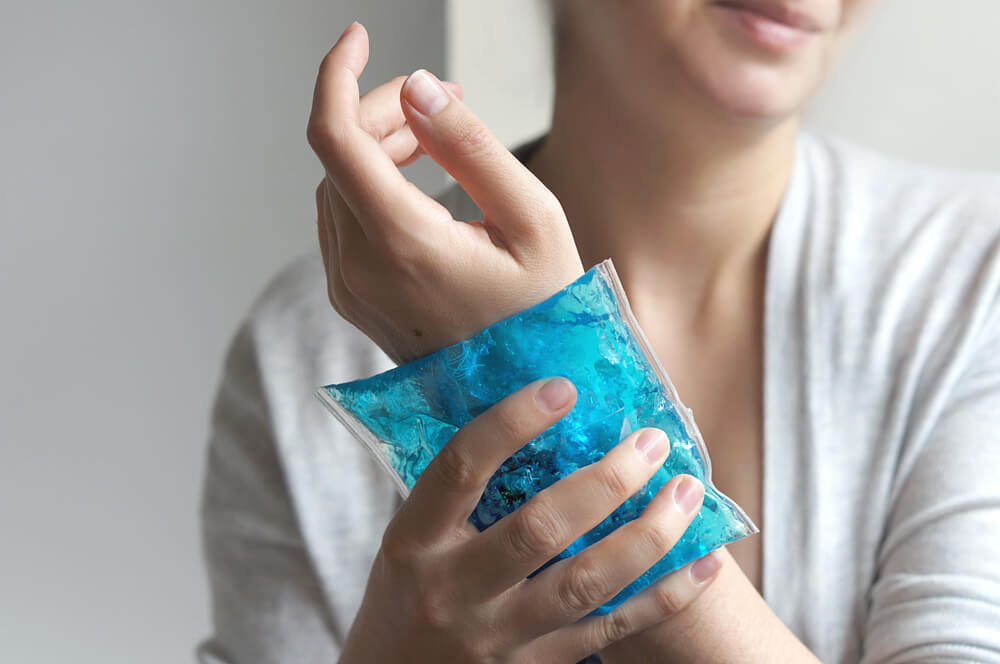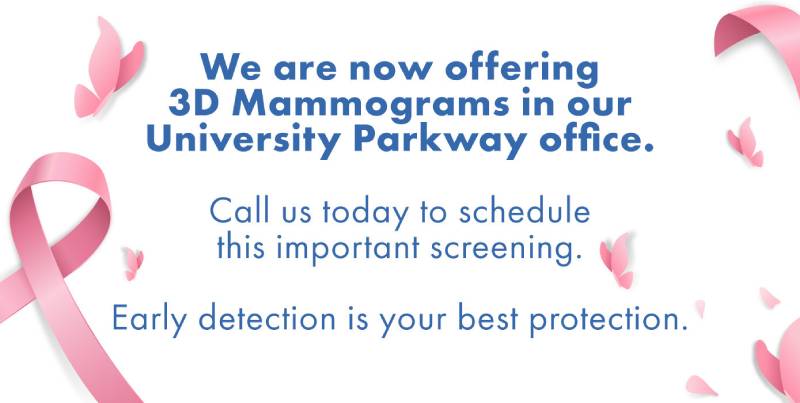When it comes to postpartum body changes, there may be more of them than what you’d think if you’ve never been pregnant before. Women’s body after pregnancy will obviously not be completely the same, which is perfectly normal. The important thing is to understand and embrace your postpartum body so that you can take proper care of yourself. Aside from postpartum stretch marks and postpartum body aches, there are other potential changes that you should know about. You can prepare for the whole journey by trusting the expert obstetric services in Sarasota, FL, where you can count on pregnancy as well as prenatal and postnatal care. Of course, if you’d like a comprehensive overview of what to expect from your post-pregnancy body, keep on reading.
- Postpartum Body Aches
When it comes to postpartum body aches, most women tend to expect them. In general, abdominal pain is something that a lot of women will feel after giving birth. This is because the uterus has to go back to its natural size. The sensation is something similar to menstrual cramping. Of course, other aches, such as breast pains during breastfeeding, are perfectly normal until the mother and her child don’t find the ideal position and get used to it. Depending on the weight gain and previous mobility, the woman might even feel joint pains.
- Bloody Vaginal Discharge
Regardless of the manner of giving birth, women have to expel the remaining tissue and blood from the uterus. This kind of vaginal discharge is known as lochia, and it can be very bloody. What’s more, some women have noted that lochia was even heavier than their regular menstrual flow. This is one of the many things to expect from your body after birth, but the good thing is that it should gradually diminish until the discharge completely stops. Keep in mind not to use tampons as these could trigger an infection. Heavy-duty pads are ideal in this case. You can always reach out to us at University Park OBGYN if you have any questions or concerns about this or any other post-pregnancy body experience.
- Swollen Hands and Feet

During pregnancy, a woman’s body produces more fluid and blood in order to accommodate the fetus. This often leads to the swelling of the extremities, such as hands and feet, and even the face. And the body, after pregnancy, simply can’t go back to normal instantly. Actually, it might be weeks before the body gets rid of all the extra fluid. This process can be sped up with a potassium-rich diet and drinking even more than the usually recommended eight glasses of water.
- Breast Changes
Postpartum body changes always involve breasts; during the period of breastfeeding, the breasts are often enlarged and swollen. It’s expected to see some milk leakage as well. However, once breastfeeding and lactation stop, the breasts will also lose their volume. In that sense, they might go from really engorged to relatively saggy, with some postpartum stretch marks.
- Pronounced Belly
Women might not feel happy with their body after birth, but remember that it’s perfectly normal for the belly to be pronounced for a couple of weeks until the uterus retracts to its original size. What’s more, due to the stretched abdominal skin, the belly simply cannot be as tight as before. Of course, this is why it’s important to maintain the abdominal muscles strong with both prenatal and postnatal workouts. With targeted abdominal exercises, women can enjoy their postpartum body and achieve their fitness goals faster.
- Postpartum Stretch Marks
The amount of gained weight and genetics play a big part in postpartum body changes when stretchmarks are concerned. Most women will first notice thin red scars in areas where their skin stretched, such as the stomach, breasts, hips, and butt. These turn whitish after a while. Topical creams such as tretinoin can help, but they shouldn’t be used while nursing.
- Varicose Veins
Not many people associate varicose veins with younger people, but the fact of the matter is that nearly half of pregnant women get them. The pregnancy puts pressure on blood vessels, making them dilated and visible, especially on the thighs and calves. While the varicose veins may become less pronounced after delivery, they will still remain a part of the woman’s body after pregnancy.
- Back Pain
Considering the weakened and stretched muscles of the abdomen, the body shifts the support to a woman’s back during and after pregnancy. This can cause back pain and poor posture. Fortunately, the postpartum body back pain should go away in about two months after giving birth. However, if it continues to be an issue, it would be best to seek help from a professional chiropractor.
- Vaginal Tearing
Going through vaginal delivery can also affect the woman’s body after birth. Essentially, this can cause the area between the anus and vaginal opening to tear, which warrants about six weeks of healing time. A daily massage of the area both weeks before and after delivery can prove to be helpful.
- Urinary Incontinence
The post-pregnancy body is sadly not free from the urinary incontinence issue often triggered in the later stages of pregnancy due to the pelvic floor muscle straining. Even after delivery, women can experience a leak when doing some heavy lifting, sneezing, or coughing. This is where Kegel exercises can help tremendously and strengthen the pelvic muscles. Essentially, the best practice is to stop the urine flow midstream about ten times every time you go. Each day, try to hold the squeeze a bit longer. The difference should be noticeable after about a month of this regular practice.
- Weak and Sore Arms
Since the focus is on the abdomen during pregnancy, many women neglect the workouts for their upper body. However, it’s not uncommon to experience joint pain in the arms and shoulders, especially due to the excessive production of relaxin hormone during pregnancy. Therefore, it’s not unusual for women to have weak and sore arms after giving birth. To minimize the strain and potential soreness, it would be best to maintain a regular workout routine that targets the upper body while still pregnant. After delivery, women should wait at least six weeks before resuming the exercises.
- Thicker Legs and Thighs
It’s not uncommon for women to neglect their diet and physical activity during pregnancy. It’s important to get back to a balanced and nutritious diet as well as a regular workout routine that targets multiple muscles after giving birth. Of course, some women simply can’t move too much during this period. However, this also means that gaining weight is easy, especially when it comes to fat accumulation in areas such as the thighs, hips, and backside. However, losing weight may take up to a year, so make sure to arm yourself with patience and consistency.
- Night Sweats
As mentioned, there’s still a lot of extra fluid in the women’s postpartum body. What’s more, a whole process of natural hormonal adjustment happens after delivery. All of this can cause the new mom to suffer from night sweats in the first week after giving birth. In general, keeping the bedroom cool, wearing light clothes made of natural material, and even using crib pads for the mattress can help a lot during this time.
- Constipation
It takes time for the bowel movement to go back to normal after giving birth. Not only are the bowels affected by the delivery, but the potential intake of pain relievers and weakened abdominal muscles can make the whole process more challenging. What’s more, some women try to hold it in for longer while fearful of their stitches coming undone, which worsens the constipation issue. A fiber-rich diet with plenty of water (even more than eight cups a day) can get things moving sooner rather than later. Walking around a bit but without any strenuous movements is also helpful. There’s no need to worry about stitches as they can hardly rip just because of the bowel movement.
- Hair Loss
Because of the fluctuating hormonal levels, almost ten percent of women deal with hair loss after giving birth. This doesn’t mean that your hair will fall off completely or that the change will be obvious to anyone but you. Since hair gets thicker during pregnancy, the body simply sheds the excess of it for about three months after delivery. However, if you find that the hair loss is lasting longer than anticipated and is starting to make you feel really uncomfortable, don’t hesitate to report this to your doctor as it might be a thyroid issue.
- Skin Discoloration
One of the biggest changes during and after pregnancy that almost 70 percent of women experience is melasma, or dark patches of skin typically located around the lips, cheeks, and forehead. These do tend to fade postpartum, but they never disappear entirely on their own. Fortunately, there are plenty of prescription creams containing Retin-A that can help with lightening the targeted area. However, they can also be too harsh on sensitive skin and can’t be used while nursing. If you want to breastfeed your child, you may have to wait a while to take care of the skin discoloration issue.
- Acne
The hormonal fluctuation can also cause the new mom to suffer acne. This particular issue should go away on its own after about six weeks postpartum. The improvement may be visible even sooner with the use of salicylic acid creams. However, these creams are unsafe to use while nursing, so this is something to consider.
- Changing Energy Levels
No two women have completely the same experience during pregnancy and after childbirth. In that sense, some women have reported that their energy levels were really high in the first six weeks postpartum. On the other hand, some women have stated that their energy levels dropped during this time, and they felt exhausted and moody.
- Feeling Anxious
Physical and emotional changes that a woman has to deal with after giving birth, together with fluctuating hormones, can trigger anxiety and even nightmares. Now, feeling a bit anxious during this time is actually completely normal, as long as those feelings don’t get in the way of your daily life and child care. As such, feelings of anxiety should go away about two weeks after delivery. However, in case they persist for longer and actually start causing more serious issues such as panic attacks and hopelessness, it’s crucial to report this to your doctor. Namely, this could be a sign of postpartum depression, a serious condition that must be properly treated.
- C-Section Scar
Giving birth through C-section means an inevitable scar in the lower abdomen. In this day and age, the said scar is already small and thin to begin with, and it will also fade in time. However, it’s also true that it can never fully disappear. If this is something you will find bothersome, you might want to consider cosmetic scar removal treatments in the future.
When to Call a Doctor?

The following issues during the first six weeks after giving birth can be signs of serious health problems and warrant an immediate call to your doctor:
- Extremely heavy bleeding that requires a pad change every hour with many blood clots
- Unusual vaginal discharge that has a foul odor
- Very frequent need to urinate or feeling a burning sensation while urinating
- Being constipated for three or more days
- Having chills or fever that’s 100.5 degrees or higher
- Painful and red episiotomy or C-section area, or getting discharge from the incision
- Headache and blurry vision that doesn’t seem to subside
- Painful, swollen, and red breasts, together with fever
- Nausea, vomiting, or fainting
- A red, swollen, and tender area on the calf or leg, could be an indication of DVT
- Excessive swelling of feet, hands, and fingers, and/or face
- Overwhelming feelings of sadness and hopelessness about being unable to care for yourself or your child properly
When Can You Get Pregnant Again?
It’s generally recommended that women wait at least 18 months before getting pregnant again. Not letting your body heal properly and giving yourself enough time between pregnancies can result in premature birth. What’s more, it would be best to wait about six weeks postpartum to engage in sexual intercourse once again. Now, keep in mind that even if your period may not have come back by this point and you’re breastfeeding, there’s still a chance to get pregnant. Therefore, it’s best to use some sort of contraceptive method, be that a birth control pill or a condom. In case you’re breastfeeding, make sure to discuss what the best and safest birth control pill is with your doctor so that it doesn’t affect the milk at all.
If you’re not breastfeeding your baby, you may expect your period to come back anywhere between six and eight weeks after giving birth. On the other hand, if you are breastfeeding, it’s possible not to get your period for months – or until you stop breastfeeding completely. However, as mentioned, breastfeeding is not at all a secure method of contraception. Once you get your period back, it’s quite possible that it won’t be the same as before you got pregnant. In the beginning, it’s quite likely that it will be either longer or shorter than what you’re used to.
The postpartum body changes can be challenging to deal with, not to mention all the emotional shifts you’ll also have to go through. This is precisely why it’s perfectly reasonable and strongly recommended to ask for help. You don’t have to do everything on your own. Rely on your partner as well as your friends and family as much as possible. Of course, make sure to go to all the scheduled doctor checkups and be very open with your doctor about everything you might be experiencing. If you’re thinking about starting a family and getting pregnant, or if you simply need advice about improving your gynecological and reproductive health, don’t hesitate to get in touch with us at University Park OBGYN.


